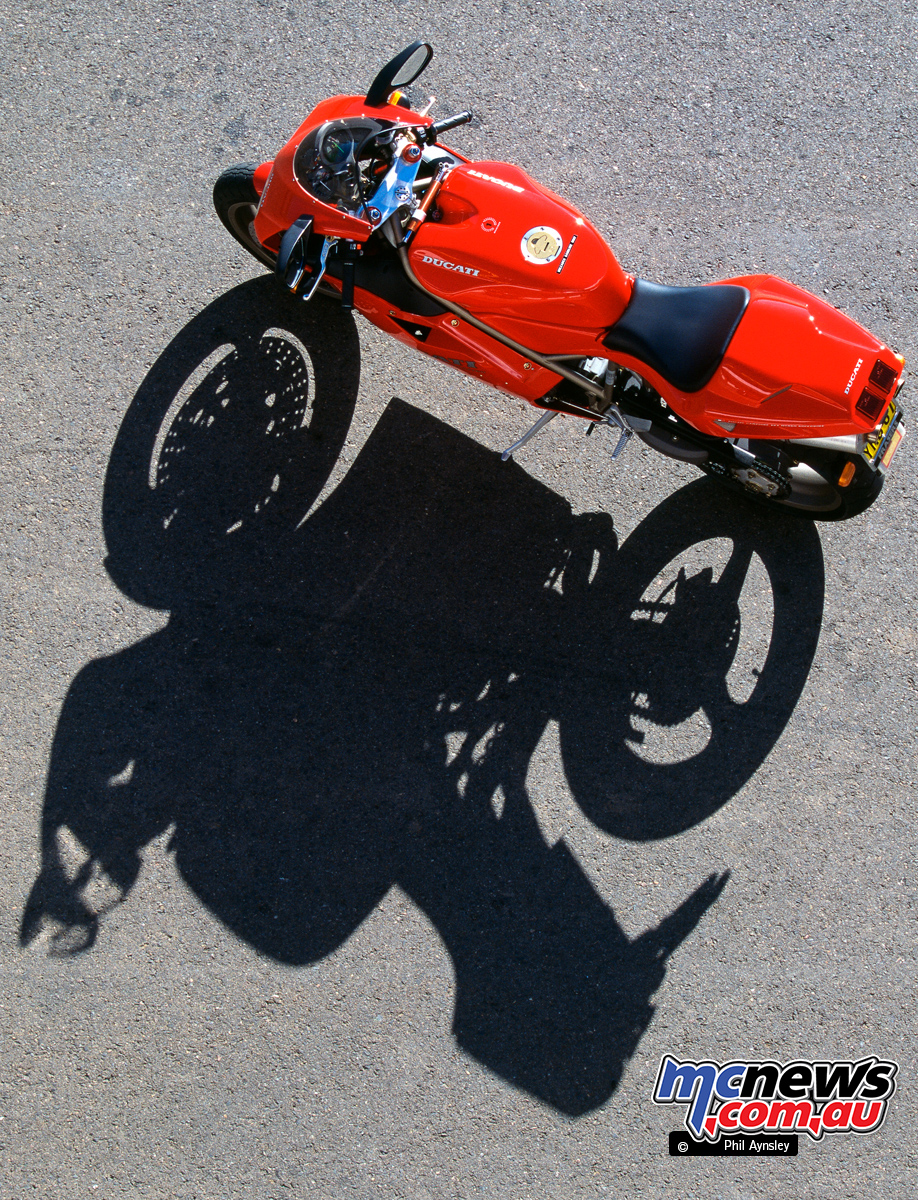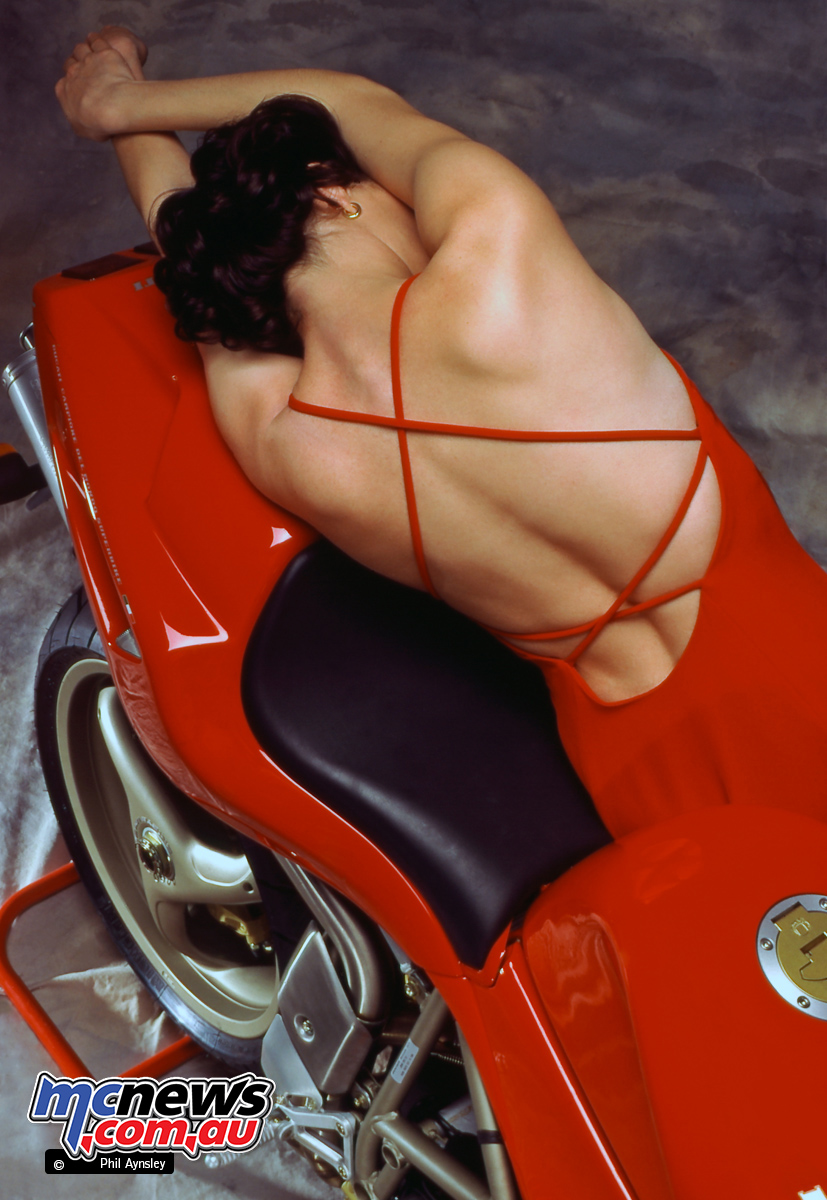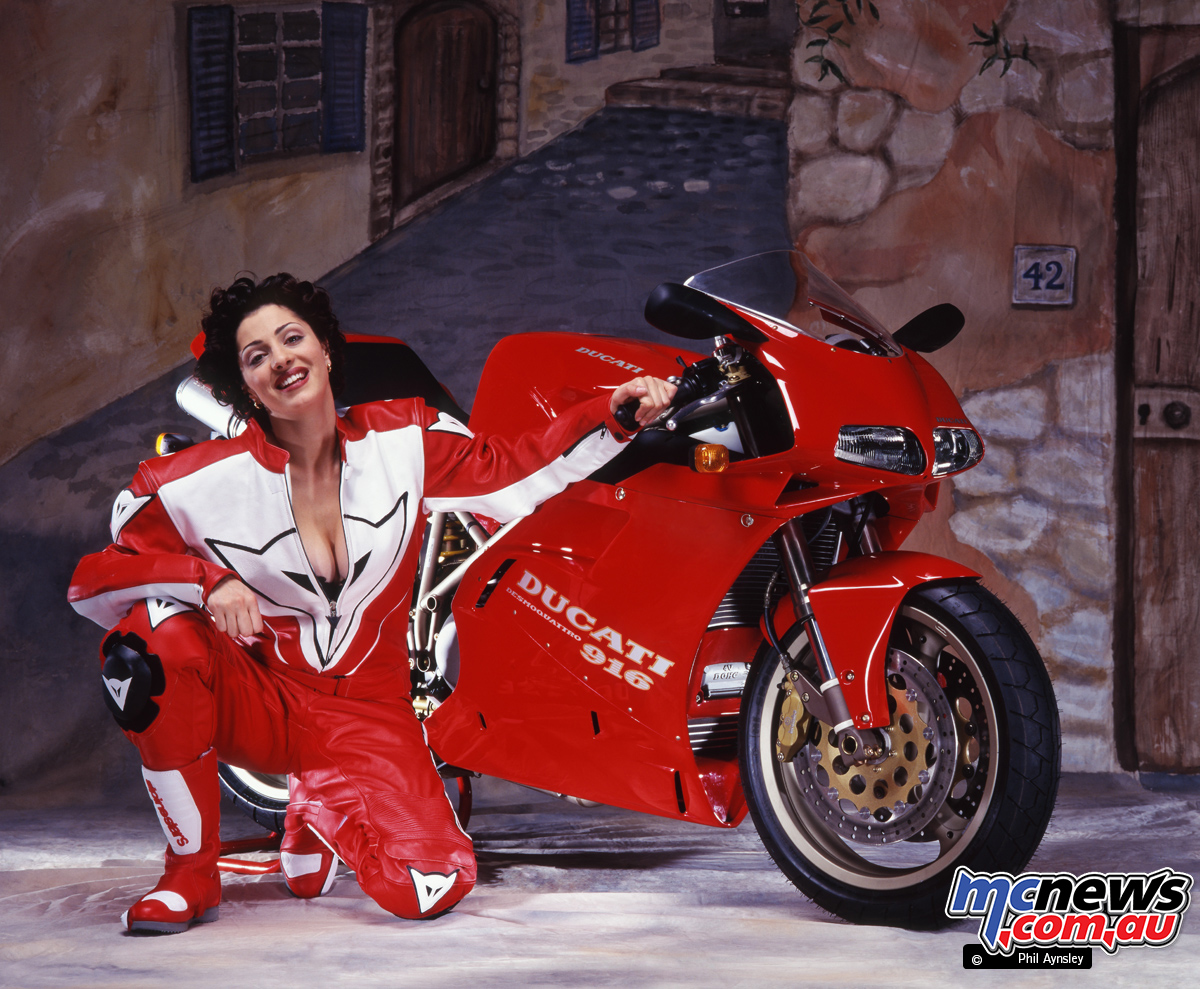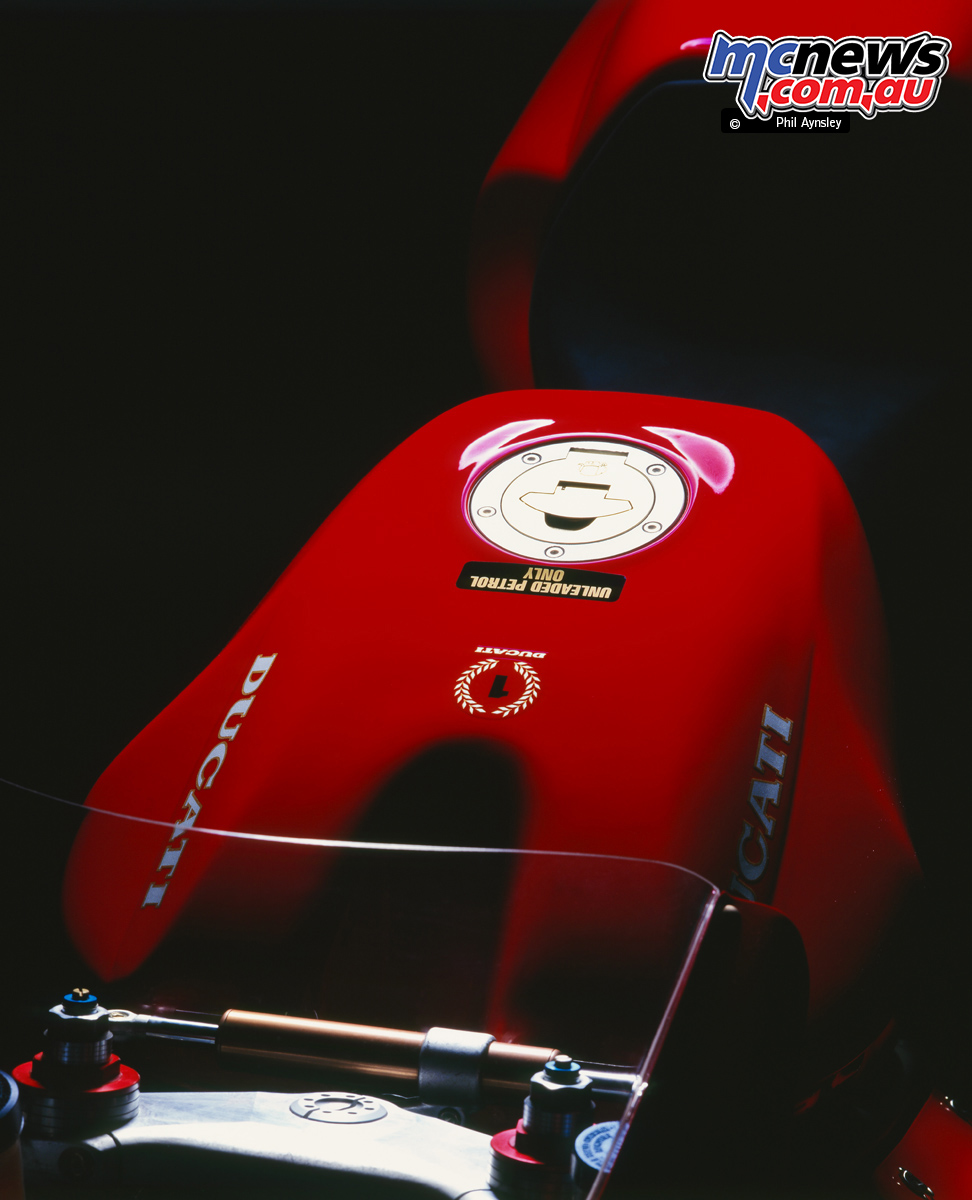Ducati 916
Phil Aynsley’s last column featured the ultimate Ducati V-twin superbike – the 1299 Panigale Superleggera (Link), while this week our resident Ducati expert thought it would be fitting to have a look at its spiritual precursor – the 916, especially as this year marks its 25th anniversary!
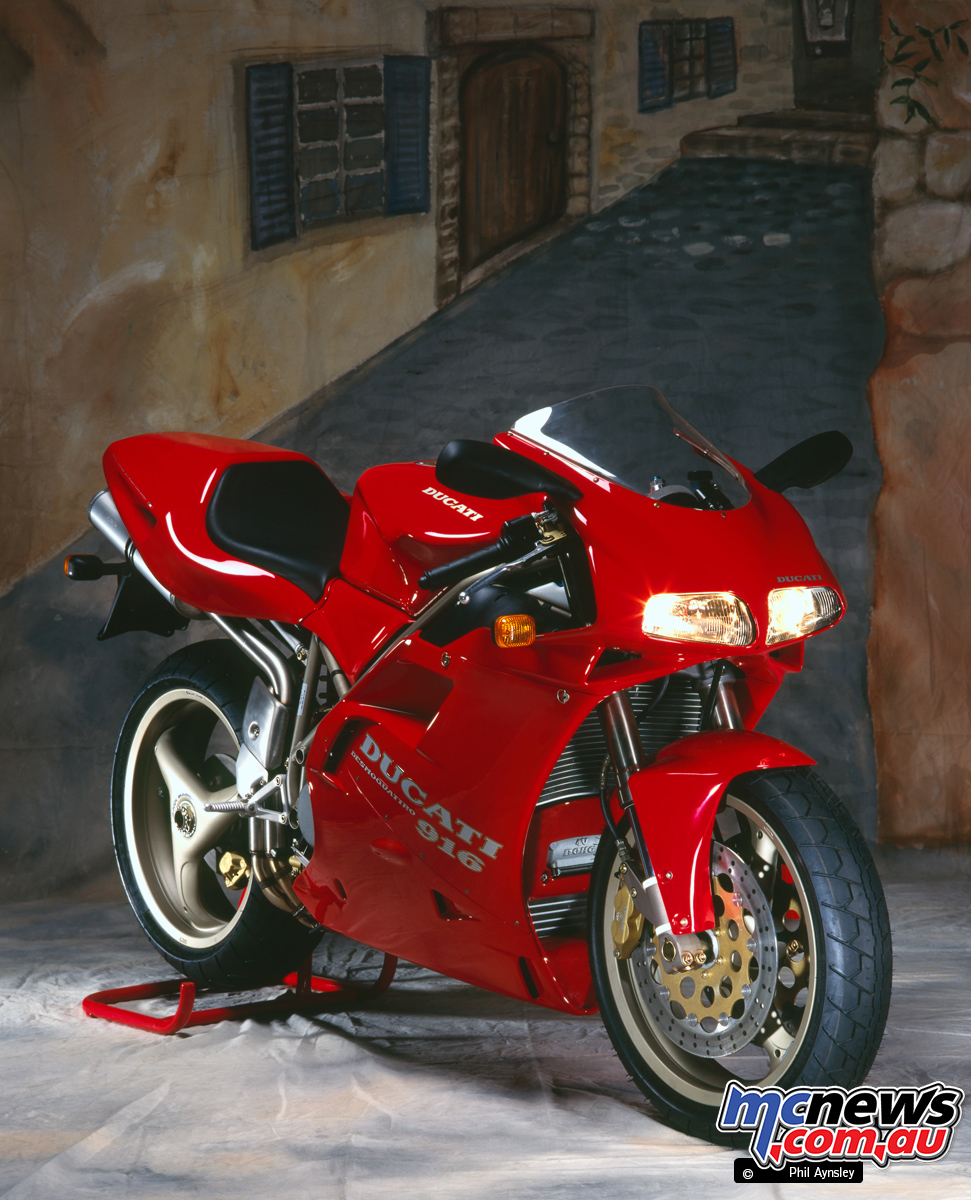
While an argument could well be made that the 851 (Ducati’s first four-valve V-twin production bike) was the company’s original “modern” superbike, I think that the impact of the 916 on the motorcycling world was such that it can truly be regarded as the first really “modern” Ducati superbike.
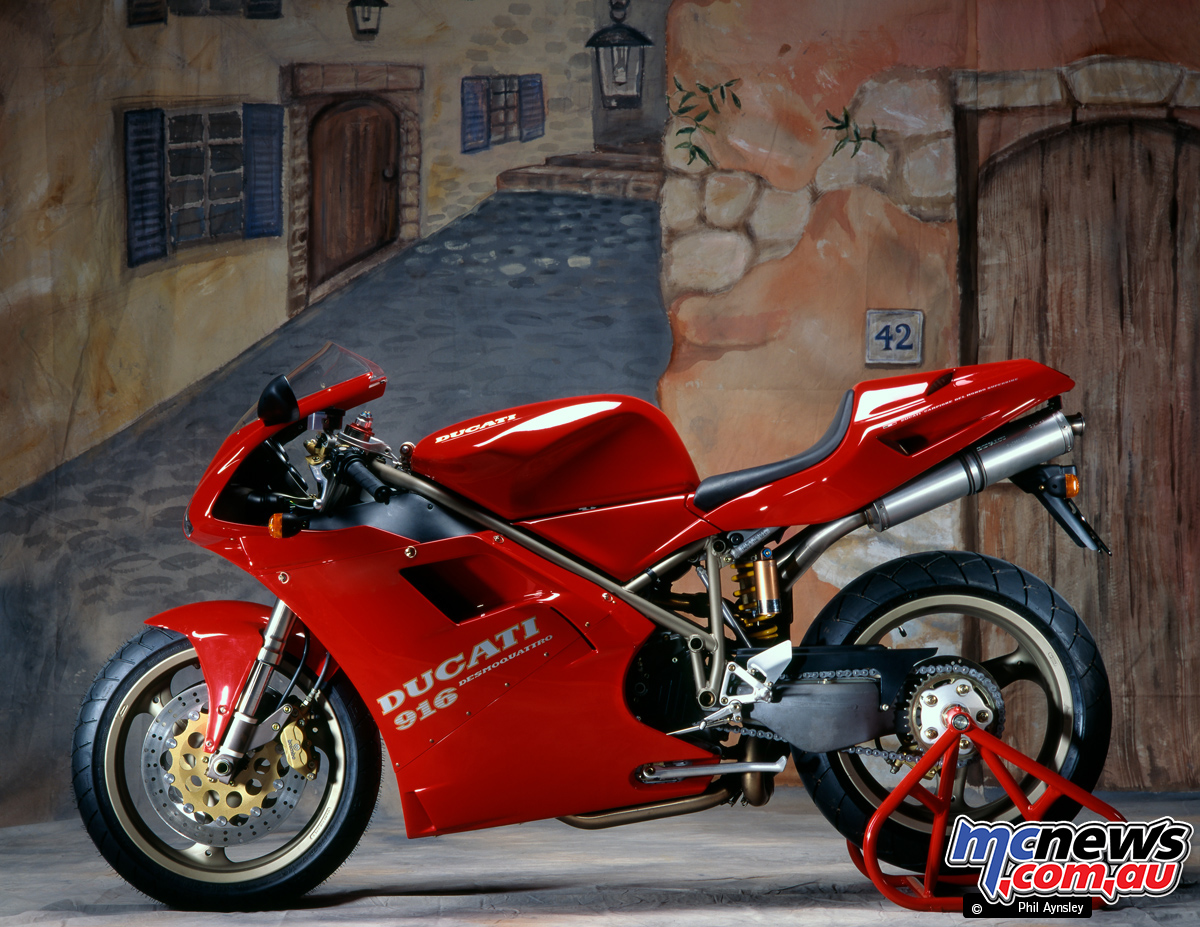
With the introduction of the 916 Strada in 1994 Ducati took the two-wheeled fraternity by storm. No doubt it is Massimo Tamburini’s most acclaimed (and copied) design. While Tamburini himself acknowledged that he took inspiration from the 1992 Honda NR750 (Link) – particularly the underseat exhausts, his design was an even more attractive one!
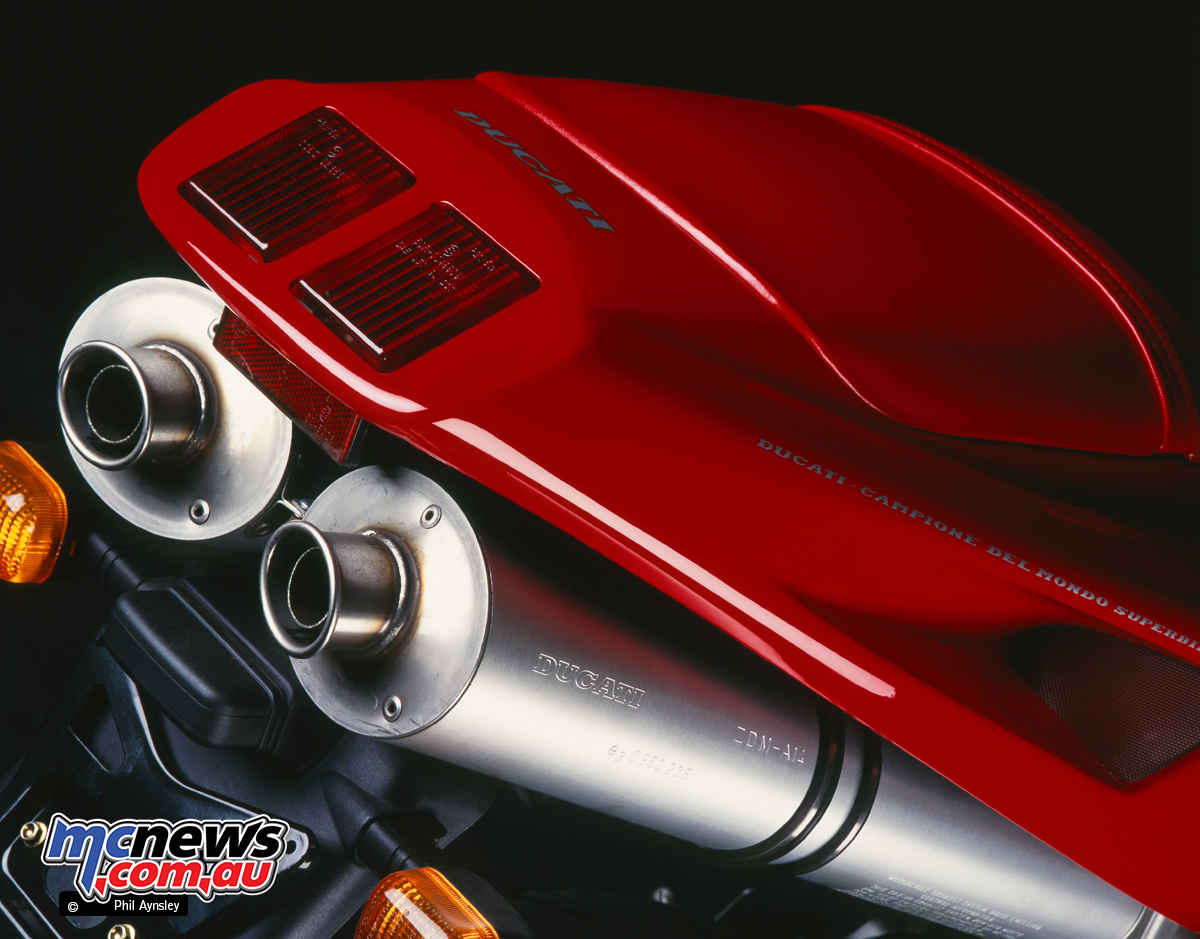
The motor was a development of the 851/888, with the stroke increased from 64 to 66mm, keeping the bore at 94mm. A new engine management system was used.
The rest of the bike was new and resulted in a considerably smaller bike than the 851, both physically and visually. The design certainly had a great impact on not only the public but also other manufacturers, as evidenced by the proliferation of underseat exhausts and ‘styled’ headlights.

In combination with its 996, 998 and 748 derivatives, over 63,000 were built until it was eventually replaced by the 999/749 in 2002.
Power of the original 916 was 114 hp at 9000rpm, with a weight of 198 kg, and the 916 was good for a top speed of 260 km/h.
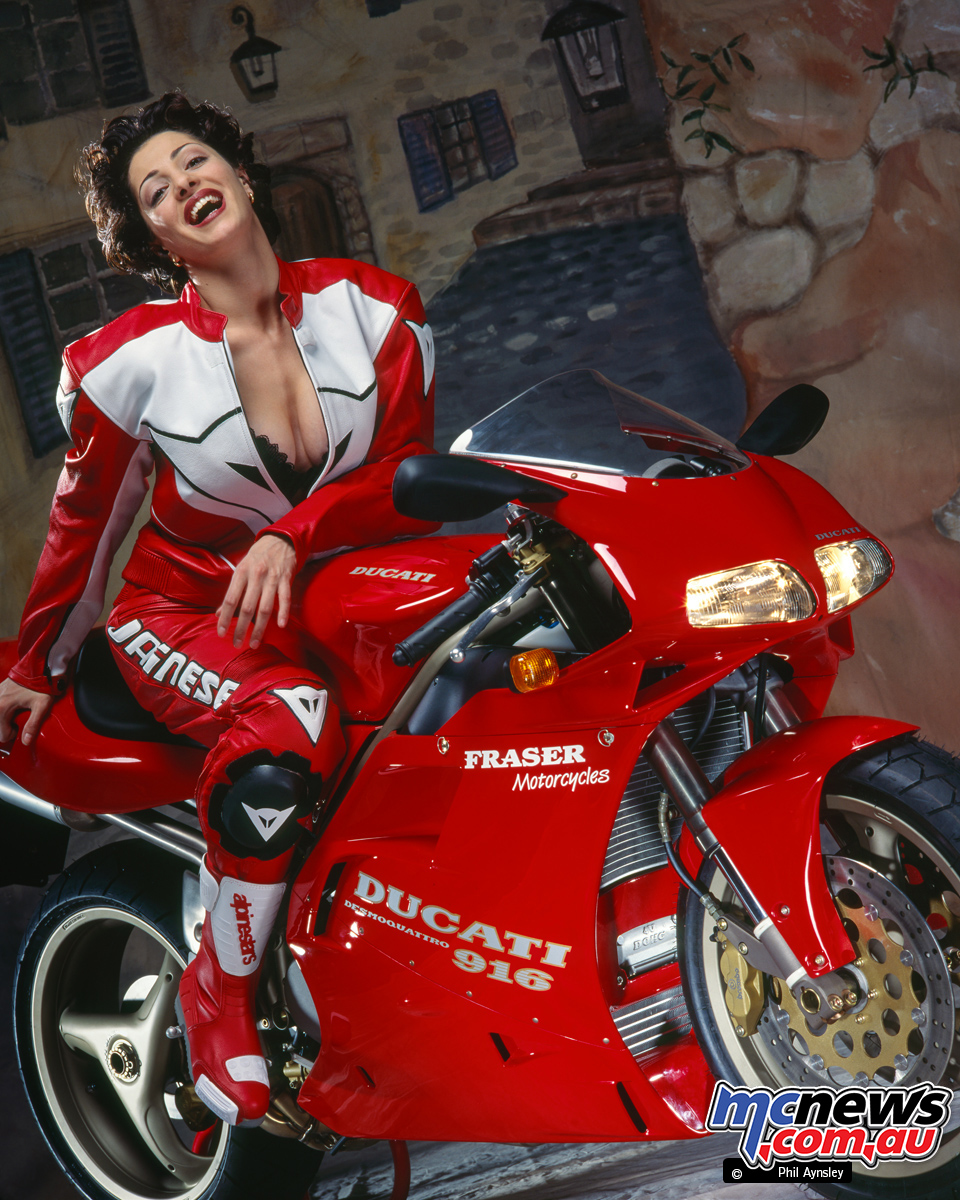
The bike in all but one of the images seen here is the first to arrive in Australia. As a committed Ducati fan I thought it appropriate to commission an Italian village themed backdrop for the shoot I did for REVS magazine.
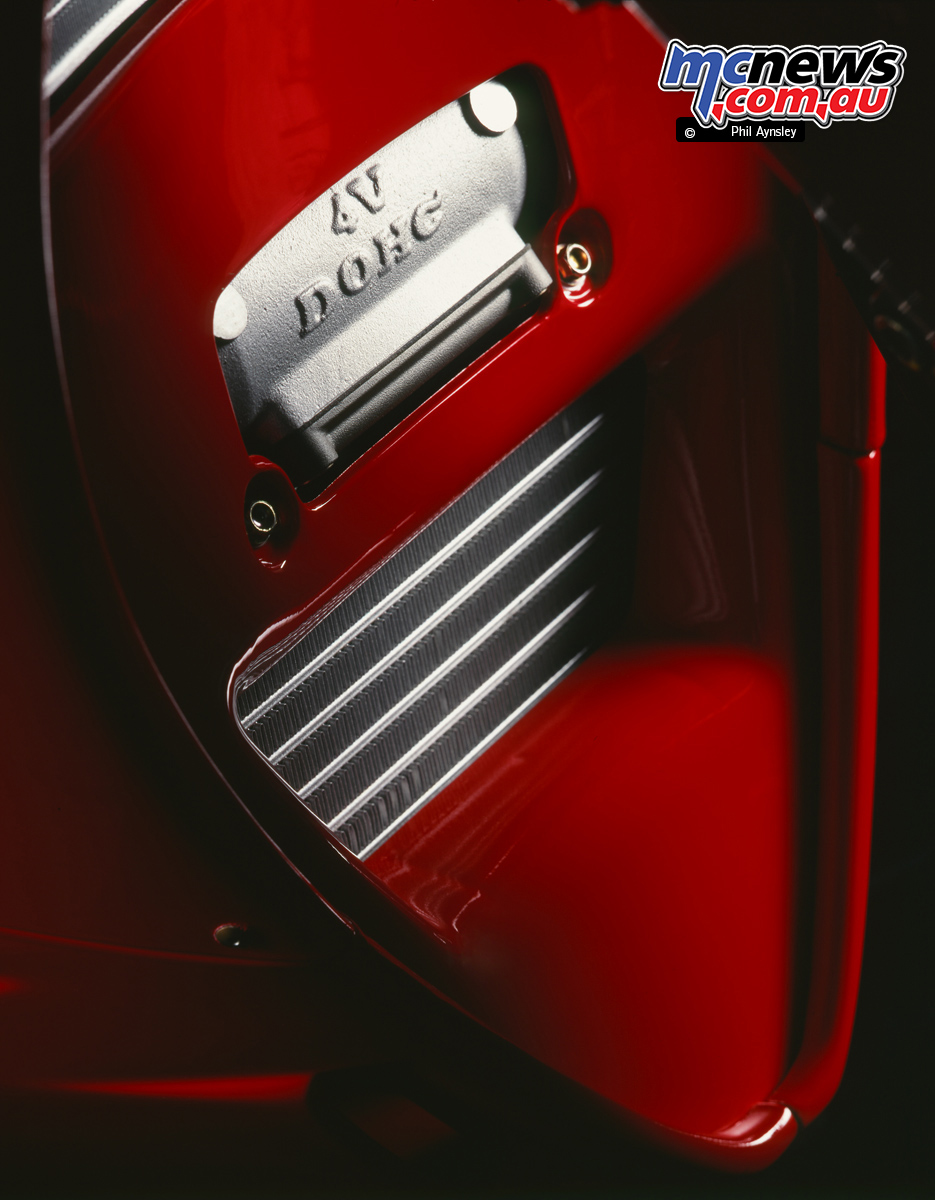
The addition of a suitably Latin looking model was a bonus! The overhead shot of a 1996 bike is included purely because it is a particular favourite of mine!
